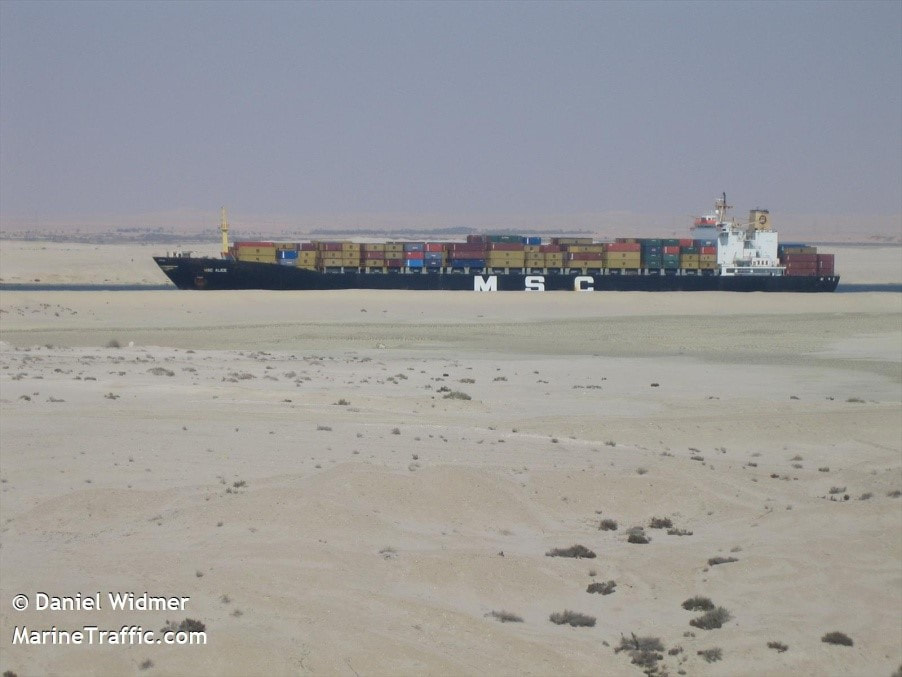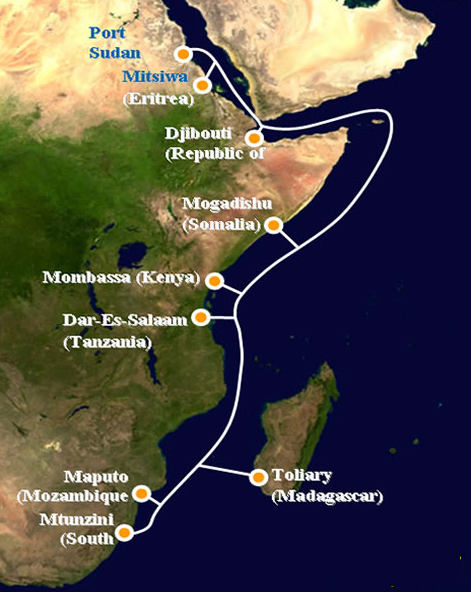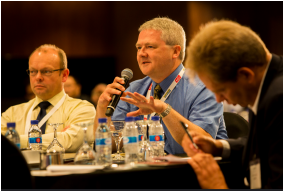|
The Somali government has detained the container feeder MSC Alice on charges that her anchor cut the undersea fiber-optic cables that carry the nation's internet traffic. Somalia has had no terrestrial (sic) internet connection to the rest of the world since June 24, 2017, and the government is seeking compensation for damages. Authorities were hoping to have internet restored sometime this week. MSC Alice is a Panamanian flagged containership owned and operated by Mediterranean Shipping Company. “Following reports that an underwater cable was damaged, MSC is investigating the incident with other relevant parties and these investigations are at an early stage,” the company said in a statement. Photo of “MSC Alice” Source: Marinetraffic.com The internet outage was estimated to cost the country $10 million per day in lost business, according to the government. Among other effects, the outage has effectively cut off international wire transfers, according to a spokesman at the International Bank of Somalia. The Somali economy relies heavily upon remittances from expatriates who earn money abroad and send it back to their families. In addition, the outage is reportedly affecting NGO relief efforts in rural areas. Somalia is in the midst of a severe drought, and the resulting famine has killed thousands of people. Quartz reports that local relief organizations do not have access to satellite internet, and their activities have suffered from the disruption, as they rely upon the lower-cost terrestrial (sic) connection to solicit donations and coordinate their efforts. A cable layer from Oman has recently arrived to begin repair work. Officials hope that internet service will be restored soon, but they have not announced a firm timeline. The Fredriksen-owned MSC Alice, exname SFL Europa, was chartered by Hanjin Shipping until the carrier's dramatic collapse last year. She only recently left detention in Chittagong, Bangladesh, where she had been held pending the outcome of a case filed by the port authority over unpaid fees. She is operating under a five-year bareboat charter to MSC. Adapted from: The Maritime Executive, gCaptain.com ANALYSIS: In recent times, Somalia has been mostly associated with the risk of pirate attacks on vessels launched from its shores. It is therefore somewhat surprising to see the rule of law being applied by the Somali authorities in this instance. The impact on remittances of a 24-day outage on Somalia’s only international fiber connection is undoubted but a cynic might suggest that this is legalized piracy, taking advantage of a cable cut and selecting an owner of a vessel in the vicinity that is likely to pay up a large fine to avoid delays in delivering its cargo. The cable affected by this incident is the EASSy (Eastern Africa Submarine System) cable which runs up the east coast of Africa from Mtunzini, South Africa to Port Sudan, Sudan with branches into Mozambique, Tanzania, Kenya, Somalia, and Djibouti. Construction of the main cable system was completed in 2010 but the branch into Mogadishu, Somalia was only completed in February 2014. The Somali landing party is Dalkom Somalia. The EASSy consortium has a maintenance agreement with e-Marine, the marine subsidiary of United Arab Emirates’ incumbent telco, Etisalat. E-Marine’s newest cable ship, the “Maram” was mobilized and set sail from Salalah, Oman on July 7, 2017, i.e. thirteen days after the outage occurred. Apart from time taken to load EASSy spare cable and repeater, the main reason for the long delay in repair ship mobilization would have been caused by the need to make special security arrangements for the vessel to operate in this area. During this time, the designation “ARMED GUARDS ON BOARD” appeared on the Maram’s AIS reports. EASSy Cable Map Source: EASSy Consortium
The “Maram” took six days to arrive at the fault site and remained offshore from Mogadishu for the entire five days taken to effect the cable repair. She did not put into port to replenish supplies before returning to her home port.
0 Comments
Leave a Reply. |
Julian Rawle, AuthorThought leadership articles and commentary on developments related to the subsea fibre optic cable industry can be found here. Archives
February 2018
Categories |





 RSS Feed
RSS Feed